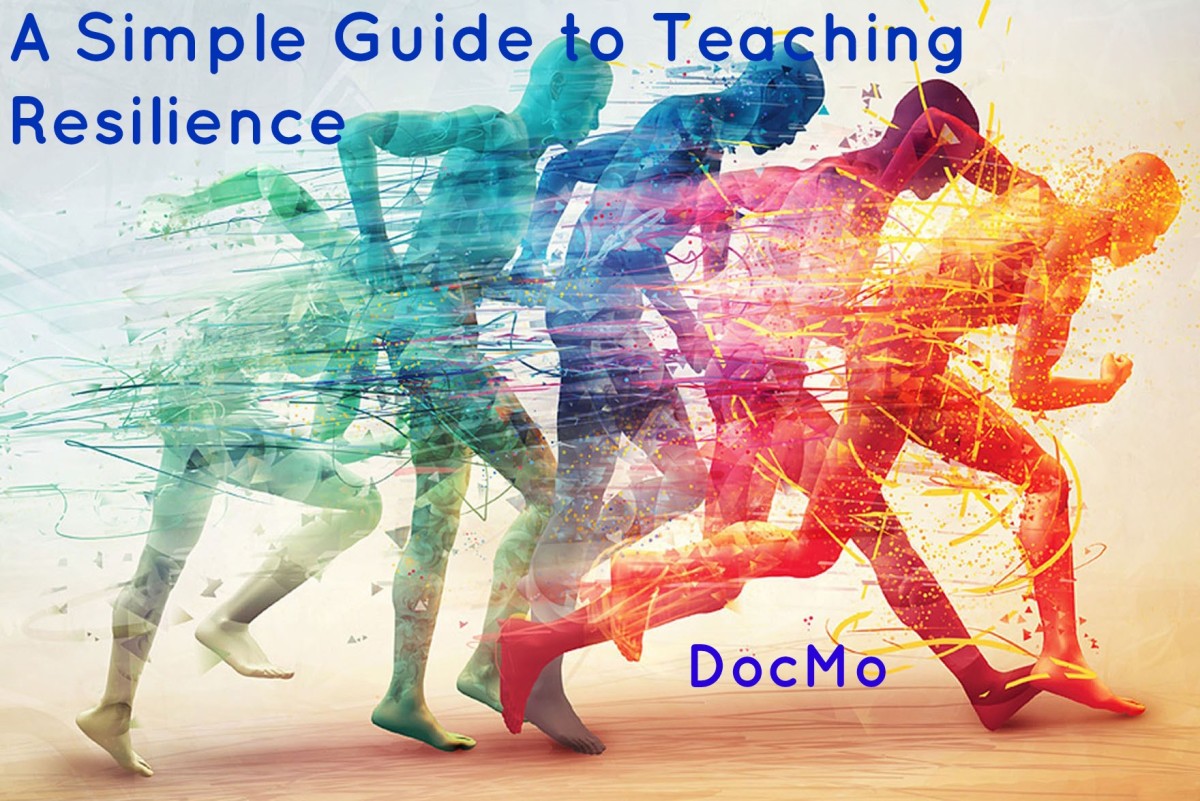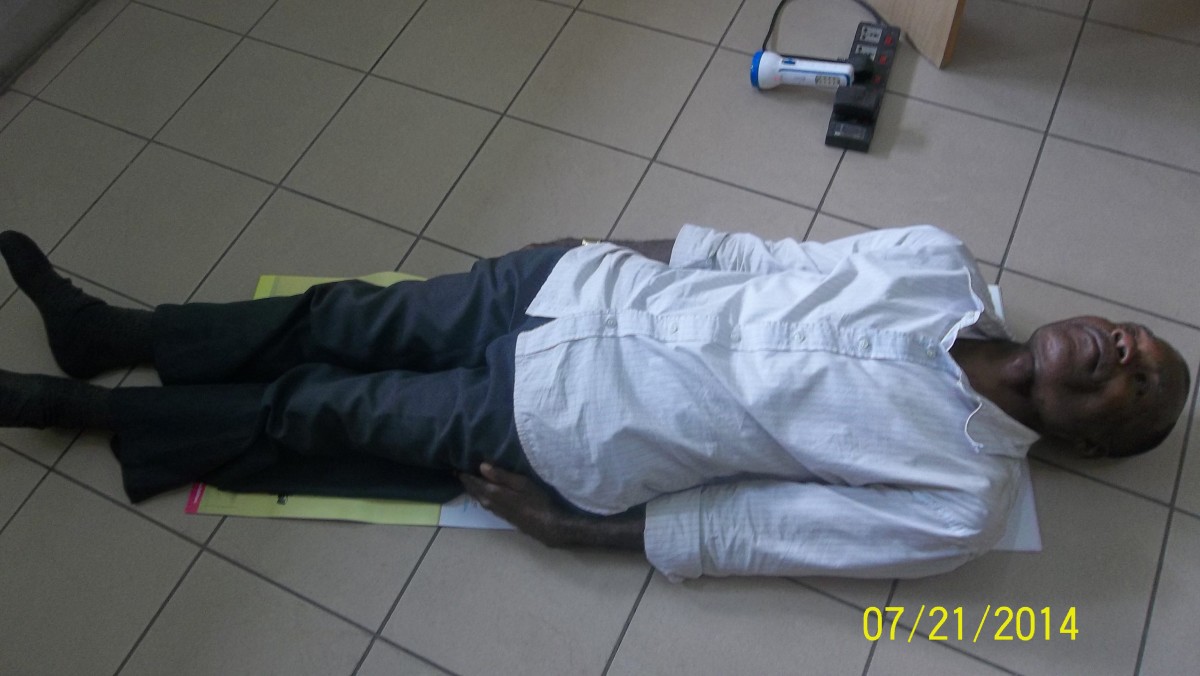How To Build Resilience

Building Resilience To Bounce Back Quickly From Setbacks
"The Beauty of Life surrounds me,
the Joy of Life uplifts me,
and the Resilience of Life protects me.
It is enough."
—Laura Teresa Marquez
I'm thankful for my resiliency, for my ability to bounce back quickly from setbacks, and to stay up in down times.
I wasn't always this way.
During a long and difficult period of my life I was down, depressed, feeling helpless and hopeless about my future. But, learning how to build resilience enabled me to overcome my pessimism and become realistically optimistic.
Things have gone much better for me ever since.
Two things helped me to develop that realistic optimism:
1) the capacity to create results that matter to me, and
2) building resilience, my ability to bounce back quickly from losses and setbacks.
"Emotional resilience says stress counselor Elizabeth Scott, "refers to one’s ability to adapt to stressful situations or crises. More resilient people are able to "roll with the punches" and adapt to adversity without lasting difficulties; less resilient people have a harder time with stress and life changes, both major and minor.
"It’s been found that those who deal with minor stresses more easily can also manage major crises with greater ease, so resiliency has its benefits for daily life as well as for the rare major catastrophe."
Learning how to recover after loss, failure, or other adversity is key to building resilience, and to achieving successful results in life, work, and relationships.

Getting Back Up: Learning From Failure
“Suppose you have tried and failed again and again,” said actress Mary Pickford. “You may have a fresh start any moment you choose, for this thing that we call failure is not the falling down, but the staying down.”
Ms Pickford makes a distinction between the act of failing and the conclusions you draw about that act. Those who stay down judge that they have failed. They generalize from their act to the illogical conclusion, “I am a failure.”
Worse, they may go even further, and generalize to, “I always fail.”
Thus, they assume, there is no point in getting up. Viewing themselves as victims of circumstances, they stay down, don't act, and don't learn from their experience.
But making mistakes—and correcting them—is key to creating, and resilience. There is no failure in learning, only feedback. Fail fast; learn quickly.
Edison failed hundreds, even thousands of times, before he found a reliable filament for light bulbs. But did you know that giants such as Henry Ford and Walt Disney suffered multiple bankruptcies before they achieved lasting success.
Paralyzed from the waist down, "Man In Motion" Rick Hansen wheeled around the globe, raising millions for spinal cord research. Cyclist Lance Armstrong overcame major, mid-career cancer to win Le Tour de France seven times.
Daily, millions of people get up after being knocked down. Unwilling to adopt a victim story, they keep trying, and learning. They take power from adversity, and place it in their own hands, increasing their "sense of control."
Control, along with ownership of results, is key to building resiliency. "Resilience," says Paul Stoltz, author of Adversity Quotient: Turning Obstacles Into Opportunities, "is the single greatest factor in driving change, improvement, and results."
Owning The Results You Want to Create
Faced with adversity, don't blame yourself, circumstances, or other people. The origin of adversity is not nearly as important as owning the results you want to create—in spite of who or what caused the difficulty.
If you suffer a loss—physically, emotionally, or financially—focusing on that loss, how it happened, or who was responsible will make it harder for you to get beyond it, and create the results you want.
"Experience," said Aldous Huxley, "is not what happens to you. Experience is what you do with what happens to you."
If you lose a job, don't focus on the injustice, or inconvenience. Focus on the kind and quality of job you most want. If you lose a friend or lover, don't just grieve the loss. Focus on improving friendships, or finding new friends. If you suffer a business loss, regroup, revsision your business, and focus on the results you truly want to create.
You won't be able to do so instantly. Even minor losses, such as losing your car keys, provoke a temporary sense of helplessness. But, with practice, you can shorten the helpless period. You can learn to grieve loss, accept the new reality, and move on.
Before I learned to respond effectively to adversity, I often got frustrated, angry, and quit if something did not go as I thought it should. I was not resilient. I was not able to bounce back from setbacks, or losses.
Embrace Adversity, Own Your Results, Control Your Actions
As I learned to embrace adversity, own my results, and take action on what I could control, I built up my resilency, bounced back quicker and easier, and created better results.
Once, for example, when hired to give a 90-minute keynote presentation to 1000 people at a prestigious conference, three setbacks stacked one on top of the other threatened to overwhelm me.
First, the agenda drifted off schedule. Three times during the morning of my presentation, organizers asked me to shorten it: first to 60 minutes, then 45, and finally to 30. I agreed, but with each change I grew more edgy.
When I took the stage, my podium was at the side, but my overhead projector was in the middle. To talk and show my graphics—without trotting back and forth across the stage—I had to unfasten my mic from the podium, hold it in one hand, and my notes in the other. I spoke from beside the projector and changed slides with my third hand. (That's how it felt!) Not only did this frustrate me, it cut another five minutes off my talk.
Finally, when I started to speak, the sound system did not work. But the sound booth techs assured me I was "live." Each time I looked to the booth for help, the techs gave me a frustrated "you're live" sign. I was confused, and irritated. My 30-minute session had now shrunk to 20 minutes. A large part of me wanted to throw up my hands in frustration, and say, "What's the point?"
Instead, I visualized the results I wanted: an impactful, professional talk, an impressed audience, happy organizers, a reputation for being resilient, and my $1000 speaker's fee. Owing those results, I sucked it up and shouted the highlights of my talk. When the organizers announced lunch, I offered to stay and take questions. About half the audience crowded around the front of the stage, and we had a great Q&A session.
In the end, the audience was happy, the organizers were delighted, and I got paid. The techs apologized because they hadn't realized a TV crew had unplugged the feed to the auditorium. The best thing was, over the next couple of days, I got a myriad of compliments from audience members on how well I'd handled a difficult situation. And two new good-paying gigs!
Had I focused on what happened, why, and who was to blame, I would have walked off the stage in disgust—and suffered the consequences. But I owned my results, took control of what I could, and did a professional job—in spite of the adversity and multiple setbacks.
Should you experience adversity and setbacks, don’t focus on the adversity and/or why it happened. Instead, acknowledge and accept the reality, and then focus on the results you want to create. Own your results—in spite of the difficulties you face.
To focus, ask yourself these kinds of questions:
* What result do I want? Is it worth working for?
* Am I willing to do what it takes to create it?
* Where am I starting, and what do I have to work with?
* What actions can I take to bring my result into being?
Once you're clear about the answers to these questions, you'll be ready to take action, learn from your experience, build momentum, and move toward the results you want to create.
As you do, you'll build competence and resilience. You will feel up, energized, and confident that you can deal with whatever life throws at you.
_____
More of Bruce Elkin's writing on his hub pages profile.
> If you like this hub, please give it a "thumbs up" below. And share it with friends on Digg, Facebook etc… via the "share it" button. Thanks!








